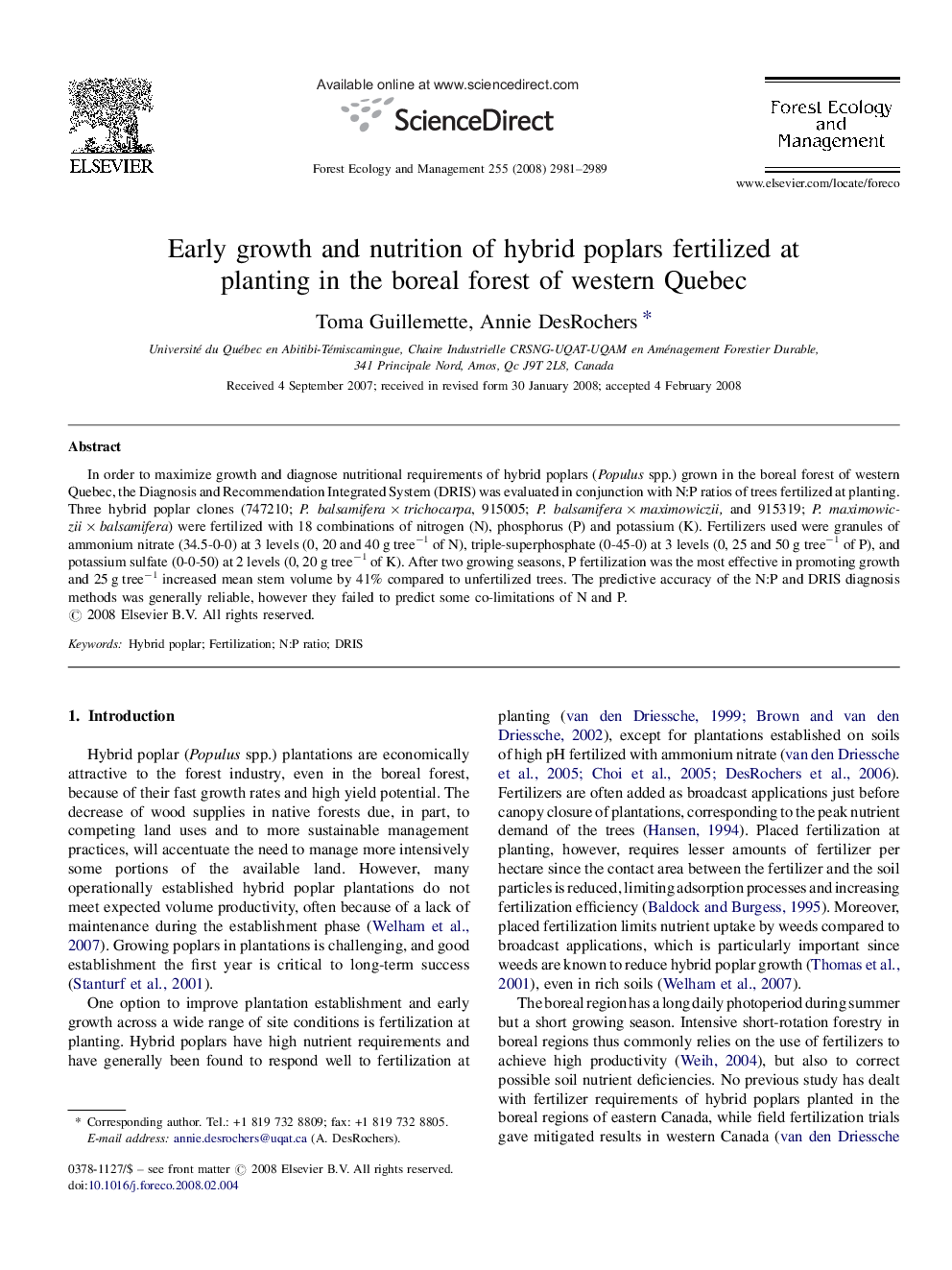| Article ID | Journal | Published Year | Pages | File Type |
|---|---|---|---|---|
| 89434 | Forest Ecology and Management | 2008 | 9 Pages |
In order to maximize growth and diagnose nutritional requirements of hybrid poplars (Populus spp.) grown in the boreal forest of western Quebec, the Diagnosis and Recommendation Integrated System (DRIS) was evaluated in conjunction with N:P ratios of trees fertilized at planting. Three hybrid poplar clones (747210; P. balsamifera × trichocarpa, 915005; P. balsamifera × maximowiczii, and 915319; P. maximowiczii × balsamifera) were fertilized with 18 combinations of nitrogen (N), phosphorus (P) and potassium (K). Fertilizers used were granules of ammonium nitrate (34.5-0-0) at 3 levels (0, 20 and 40 g tree−1 of N), triple-superphosphate (0-45-0) at 3 levels (0, 25 and 50 g tree−1 of P), and potassium sulfate (0-0-50) at 2 levels (0, 20 g tree−1 of K). After two growing seasons, P fertilization was the most effective in promoting growth and 25 g tree−1 increased mean stem volume by 41% compared to unfertilized trees. The predictive accuracy of the N:P and DRIS diagnosis methods was generally reliable, however they failed to predict some co-limitations of N and P.
